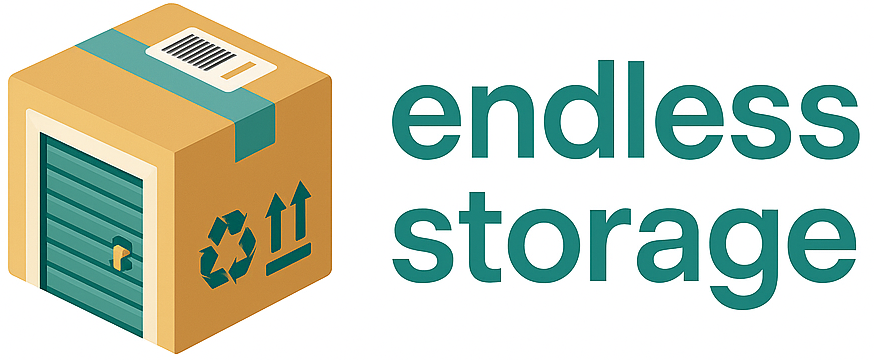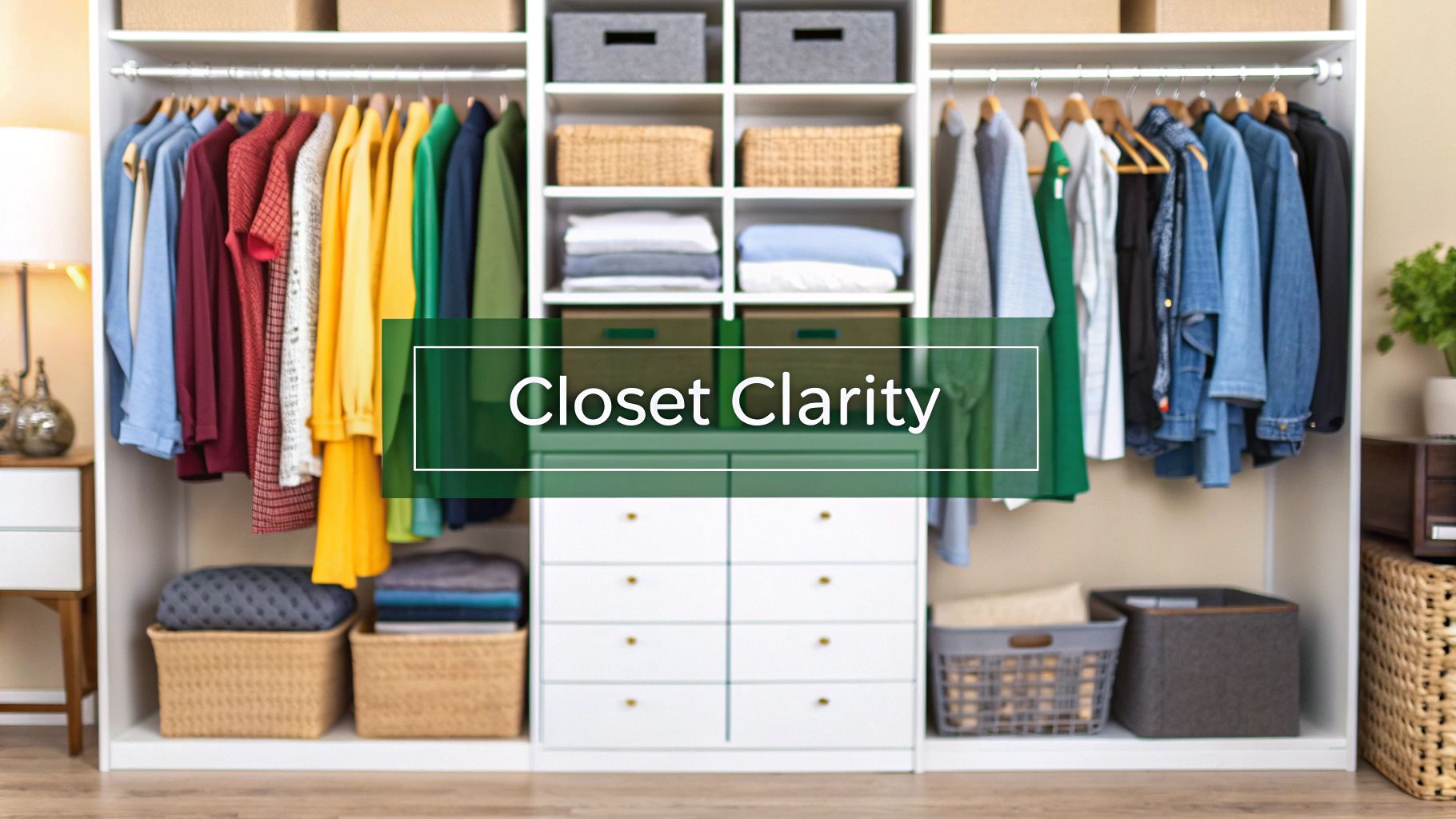A cluttered closet isn't just a physical mess; it's a daily source of stress and decision fatigue. Searching for misplaced items wastes precious time and sets a frustrating tone for the day. This guide moves beyond generic advice to provide a comprehensive toolkit of powerful closet organization tips designed for lasting order. We will present eight distinct, actionable strategies that cater to various lifestyles and space constraints, from urban apartments to sprawling suburban homes.
This is not just about tidying up; it's about creating a functional, personalized system that works for you. You will learn how to implement proven methodologies like the KonMari Method and the capsule wardrobe, master the art of vertical space maximization, and establish a simple maintenance schedule to keep chaos at bay permanently. We’ll cover everything from the logic of a seasonal rotation system to the benefits of investing in quality, modular storage. By the end of this article, you will have a clear roadmap to transform your closet from a chaotic catch-all into a sanctuary of style and efficiency, making your daily routine smoother and more enjoyable.
1. The KonMari Method: Does It Spark Joy?
The KonMari Method, created by Japanese organizing consultant Marie Kondo, is less of a simple decluttering hack and more of a philosophy for your home. This approach to closet organization centers on one core question: "Does this spark joy?" Instead of deciding what to discard, you focus on what to keep, transforming your closet into a curated collection of items that genuinely make you happy. The process involves removing every single piece of clothing and assessing each one individually.
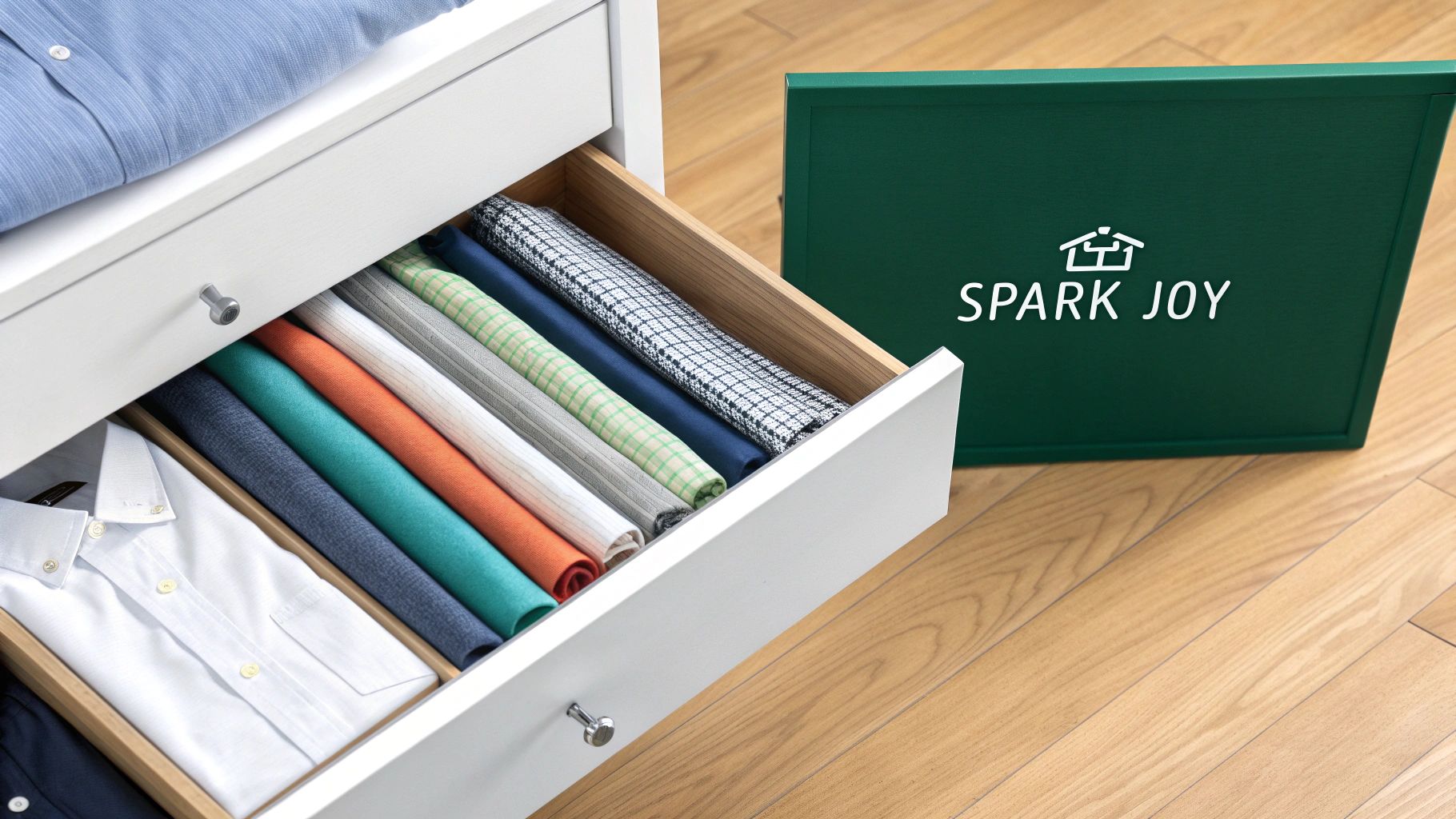
This method gained global fame through Kondo's Netflix series, "Tidying Up with Marie Kondo," which showcased dramatic transformations in real homes. The goal is to create a lasting system by changing your mindset about possessions, not just tidying up temporarily. It's an excellent choice for anyone feeling overwhelmed by a sheer volume of clothing and who wants to establish a more mindful and intentional relationship with their belongings.
How to Implement the KonMari Method
This is a significant undertaking, so it’s best to dedicate a specific block of time to the process.
- Commit the Time: Set aside a weekend or a day where you have at least 4-6 hours free from interruptions.
- Create a Blank Slate: Remove everything from your closet and pile it on your bed or a clean floor. This visual representation of your inventory is a crucial first step.
- Touch and Evaluate: Pick up each item one by one. The key is the physical connection. Ask yourself if it sparks joy. If the answer is a definitive yes, you keep it. If not, you thank the item for its service and place it in a donation or discard pile.
- Master the Fold: Learn the signature KonMari vertical folding technique. Practice on old t-shirts before moving to your cherished items. This method allows clothes to be stored upright in drawers, making everything visible and accessible.
Key Insight: The power of the KonMari method lies in its emphasis on positive selection. You're not looking for things to get rid of; you are actively choosing the items you love enough to bring back into your space.
By following these closet organization tips, you create a wardrobe that reflects who you are today, filled only with pieces that bring you happiness. For more in-depth strategies on managing your items after the purge, you can get additional ideas on how to declutter your home on endless-storage.com.
2. Seasonal Rotation System
The Seasonal Rotation System is a strategic approach to closet management that maximizes your usable space by keeping only currently relevant clothing within easy reach. This method involves storing off-season items separately, preventing your primary closet from becoming cluttered with bulky sweaters in July or sundresses in January. By rotating your wardrobe based on climate and weather patterns, you create a more functional, streamlined space that simplifies your daily routine.
This system is a time-tested practice used by everyone from fashion bloggers documenting their seasonal swaps to retail stores that rotate merchandise to match customer needs. It's the perfect solution for those with limited closet space or a four-season wardrobe, ensuring that what you see is what you can actually wear right now. This method transforms your closet from a static storage unit into a dynamic, active wardrobe.
How to Implement a Seasonal Rotation System
A successful rotation requires a bit of planning, but the payoff in daily convenience is significant.
- Schedule Your Swap: Designate two days a year, typically in the spring and fall, as your official rotation days. This turns the task into a manageable, biannual habit rather than a constant struggle.
- Prep and Pack: Before storing any off-season clothing, make sure every item is clean. Storing dirty clothes can attract pests and set in stains. Use clear, airtight bins or garment bags for protection.
- Label Everything: Clearly label each storage container with its contents (e.g., "Winter Sweaters & Coats" or "Summer Dresses & Shorts"). This simple step saves you from rummaging through multiple boxes to find one specific item.
- Choose Smart Storage: Store your off-season items in a cool, dark, and dry place like under a bed, in a guest room closet, or a dedicated storage unit. Add cedar blocks or lavender sachets to deter moths and keep everything smelling fresh.
Key Insight: This system isn't just about storing clothes; it's about curating your active wardrobe. Each rotation provides a perfect opportunity to declutter, reassess your style, and rediscover forgotten favorites.
By implementing these closet organization tips, you create a sense of abundance and order with the clothes you have. For a more detailed guide on protecting your garments, you can get more information on proper seasonal clothing storage on endless-storage.com.
3. Color Coding Organization
Color coding is a visual organization system that arranges your clothing by color, creating an aesthetically pleasing rainbow effect in your closet. More than just a pretty display, this method makes finding specific items and coordinating outfits significantly faster and more intuitive. By grouping items by hue, you can instantly see all your options for a particular color, simplifying your morning routine.

This technique has been popularized by professional organizers like The Home Edit and is a staple in high-end retail boutiques and celebrity closets for its visual impact. It transforms a cluttered space into a streamlined, boutique-like experience. This approach is perfect for visual thinkers who are motivated by aesthetics and want a system that is as beautiful as it is functional.
How to Implement Color Coding
Transitioning to a color-coded closet is a straightforward project that delivers immediate visual rewards.
- Start Small: Begin with a single category, such as all your hanging tops or dresses. This makes the process less overwhelming than tackling the entire closet at once.
- Follow the Rainbow: Arrange your clothes in the order of the colors of the rainbow (ROYGBIV: Red, Orange, Yellow, Green, Blue, Indigo, Violet). Place neutrals like white, grey, and black at one end.
- Group Similar Shades: Within each color family, arrange items from lightest to darkest. For example, place light blue shirts next to navy ones to create a smooth gradient effect.
- Create a Pattern Section: Multi-colored or patterned items can disrupt the flow. Designate a separate section at the end of your color spectrum specifically for these pieces.
- Use Uniform Hangers: Using matching hangers, preferably in a neutral color like white, clear, or black, minimizes visual noise and lets the colors of your clothes stand out.
Key Insight: Color coding leverages visual cues to create order. Your brain can process colors much faster than it can read labels or identify specific clothing styles in a jumble, making this one of the most efficient closet organization tips for quick outfit selection.
Once your closet is organized, this system can be applied to other storage. For items in bins, proper identification is key; you can explore the best way to label storage bins on endless-storage.com to complement your new visual system.
4. Vertical Space Maximization
Often, the most underutilized area in any closet is the vertical space above hanging rods and below shorter garments. Vertical Space Maximization is an engineering-inspired approach that treats your closet as a three-dimensional puzzle, aiming to utilize every inch from floor to ceiling. This method involves strategically implementing shelving, multi-level hanging systems, and stackable solutions to dramatically increase your storage capacity without increasing the closet's footprint.
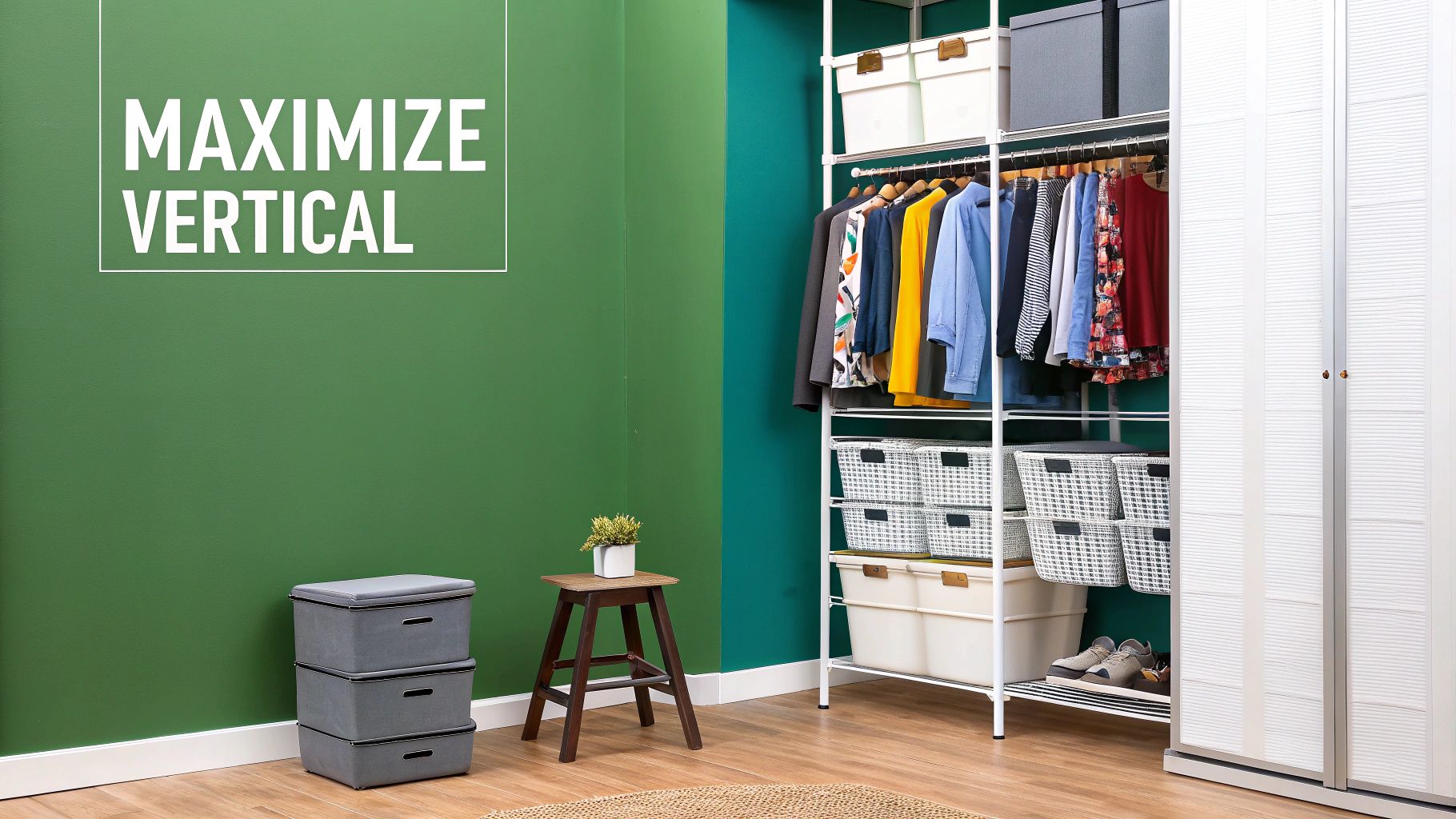
This strategy is particularly effective for those in small apartments or homes with limited closet space. Systems like IKEA's ELVARLI or The Container Store's Elfa are prime examples of modular vertical storage that can be customized to fit any dimension. The core idea is to build upwards, transforming empty air into functional, organized storage for everything from shoes and accessories to out-of-season clothing.
How to Implement Vertical Space Maximization
Adopting this method requires a bit of planning and measurement to ensure a perfect fit and optimal functionality.
- Measure Everything: Before purchasing any systems, carefully measure your closet's height, width, and depth. These measurements are crucial for selecting components that will fit precisely.
- Install Tiered Hanging Rods: Add a second or even a third hanging rod below the primary one. This is ideal for separating shirts, skirts, and folded trousers, instantly doubling or tripling your hanging space.
- Add High Shelving: Install shelves high up near the ceiling to store less frequently used items like seasonal decorations, extra bedding, or luggage. Using clear, labeled bins for these shelves makes it easy to see what's inside without a step ladder.
- Use Floor-to-Ceiling Solutions: Consider modular shelving units that extend the full height of the closet. These are perfect for storing folded clothes, shoes, and accessories in an orderly fashion.
Key Insight: Vertical organization draws the eye upward, making a small closet feel larger and more open. By converting unused vertical air into storage, you effectively reclaim valuable space that was previously wasted.
By applying these closet organization tips, you can solve many storage challenges common in urban living. For a more detailed breakdown, you can explore this expert guide to maximizing closet space on endless-storage.com.
5. The Capsule Wardrobe Approach
The capsule wardrobe is a minimalist philosophy centered on curating a small, intentional collection of versatile clothing items that can be mixed and matched. This approach shifts the focus from quantity to quality, encouraging you to invest in pieces you truly love that work together seamlessly. Instead of a closet overflowing with one-off items, you have a streamlined selection that makes getting dressed simple and stress-free.
This concept, coined by London boutique owner Susie Faux in the 1970s and popularized by Donna Karan's "Seven Easy Pieces" collection, is perfect for anyone seeking to simplify their routine and refine their personal style. It's an excellent closet organization tip for urban dwellers in small apartments or anyone who wants to combat decision fatigue each morning.
How to Implement the Capsule Wardrobe Approach
Creating a capsule wardrobe is a strategic process that requires thoughtful planning and a clear understanding of your personal style.
- Define Your Style and Needs: Before you remove a single item, track what you wear for 30 days. Identify your lifestyle needs (work, casual, special occasions) and preferred color palette.
- Establish a Color Palette: A successful capsule is built on a cohesive color scheme. Choose one or two neutral base colors, like black or navy, for about 60% of your items. Then, add three to four complementary accent colors for tops, accessories, and statement pieces.
- Curate Versatile Pieces: Select high-quality, timeless items that can be dressed up or down. A classic blazer, a well-fitting pair of jeans, and a neutral trench coat are foundational pieces that offer maximum versatility.
- Declutter and Store the Rest: Remove everything that doesn't fit your new capsule. You can donate items or place off-season and sentimental pieces into storage to keep your main closet clear and functional.
Key Insight: A capsule wardrobe isn't about restriction; it's about liberation. By limiting your choices to only items you love and that work together, you eliminate clutter and make daily dressing an effortless and enjoyable experience.
By implementing these closet organization tips, you create a functional and stylish wardrobe that saves time and money. For those looking to refine their selection, discover more about understated glamour fall 2025 capsule wardrobe essentials.
6. Categorization by Function and Frequency
This pragmatic approach to closet organization is about making your daily routine as efficient as possible. Instead of organizing by color or item type alone, you group clothing based on its purpose (function) and how often you wear it (frequency). The goal is to create a logical system where the items you reach for most are the easiest to access, saving you time and decision-making energy every morning.

Think of it like a professional kitchen where the most-used spices are right by the stove. Professional stylists use this exact principle to organize celebrity closets into distinct zones: workwear, casual weekend outfits, gym clothes, and formal attire. This method is perfect for anyone with a varied lifestyle who needs to switch between different dress codes and wants a closet that works for their schedule, not against it.
How to Implement Categorization by Function and Frequency
This system requires a bit of self-awareness about your actual habits, but the payoff in daily convenience is immense.
- Track Your Habits: For one week, pay close attention to what you actually wear. This will give you a realistic picture of your go-to items versus those that are rarely touched.
- Define Your Zones: Create distinct categories based on your life. Common zones include work, casual/weekend, activewear, loungewear, and special occasions.
- Prioritize Prime Real Estate: Place your most frequently used zone, like your Monday-to-Friday work clothes, at eye level and in the most accessible part of your closet. Less-used categories, such as formal wear or seasonal items, can be stored on higher shelves or in the back.
- Create a ‘Landing Zone’: Designate a specific hook or section for clothes that have been worn once but aren't dirty enough for the laundry yet. This prevents them from cluttering chairs or the floor.
Key Insight: This method focuses on optimizing your closet for real-world use. It’s a dynamic system that aligns your storage with your actual lifestyle, making getting dressed a seamless and thoughtless process.
By implementing these closet organization tips, you build a wardrobe that is not only tidy but also intelligently designed for your personal routine. You can enhance this system by storing out-of-season functional categories, like bulky winter wear, with a service that provides off-site closet storage solutions on endless-storage.com.
7. Investment in Quality Storage Solutions
Investing in quality storage solutions is a long-term approach to closet organization that prioritizes durability and design over temporary fixes. This method treats organizational tools as a worthwhile investment in your home's functionality, much like a piece of quality furniture. Instead of mismatched plastic bins and flimsy hangers, you opt for cohesive, well-built systems that elevate your space and stand the test of time, ensuring your closet remains orderly for years.
This infographic outlines a simple three-step process for evaluating and choosing high-quality storage solutions that fit your long-term needs.
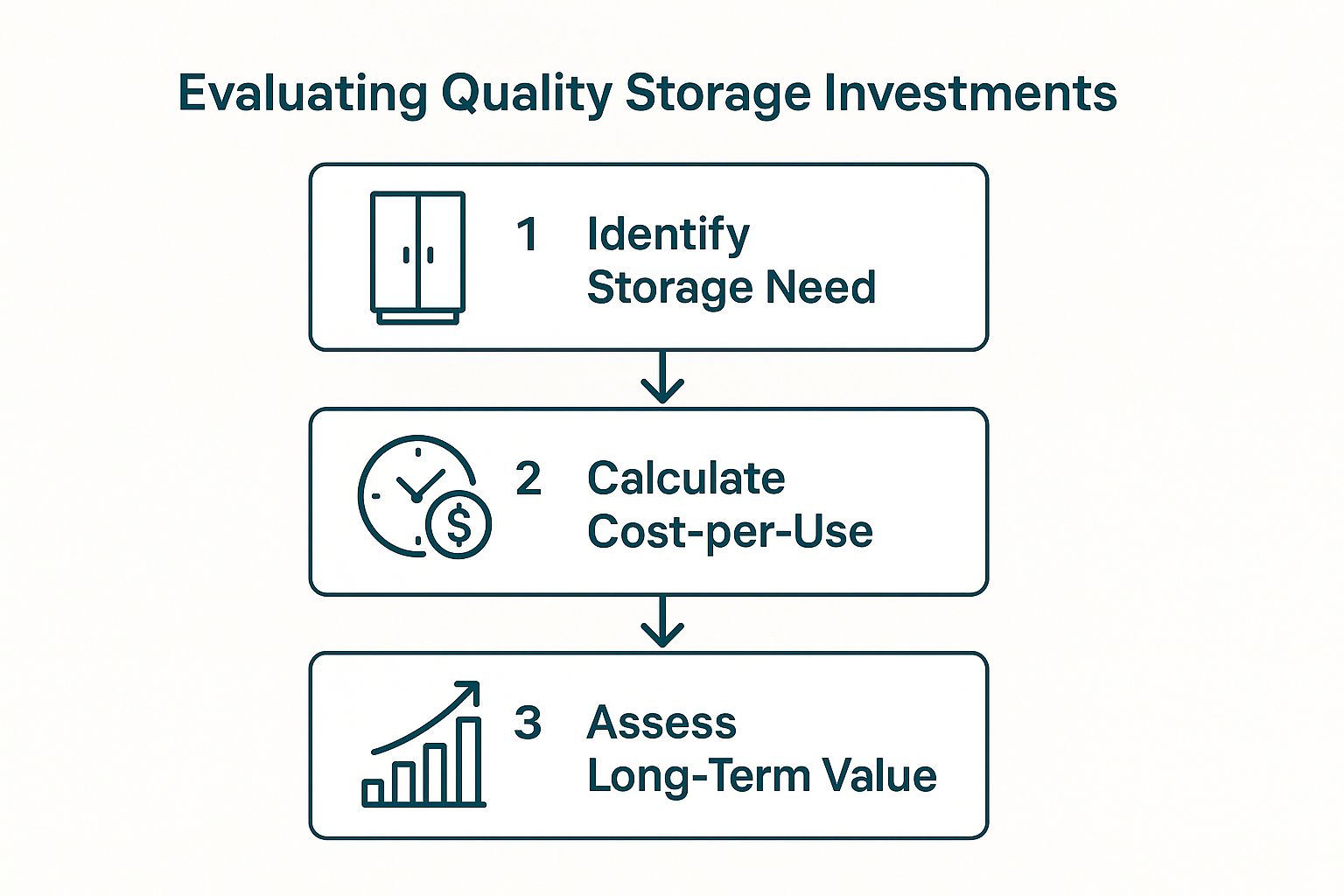
This process encourages a shift from short-term cost-saving to long-term value assessment, which is central to this closet organization tip. This approach is championed by retailers like The Container Store and custom services like California Closets, which focus on creating lasting, functional, and aesthetically pleasing storage environments. It is ideal for homeowners looking to create a permanent, high-functioning system rather than applying quick, temporary patches.
How to Implement Investment in Quality Storage
Making smart investments requires a strategic approach rather than an impulsive shopping trip. Focus on pieces that offer the most significant impact first.
- Start with Hangers: This is the easiest and most impactful upgrade. Swapping out wire and plastic hangers for uniform, high-quality wooden or velvet ones provides immediate visual harmony and better support for your clothes.
- Prioritize Modular Systems: Look for systems like Elfa that can be reconfigured or expanded as your needs change. This adaptability ensures your investment remains relevant whether you move or your wardrobe evolves.
- Illuminate Your Space: Good lighting is a functional investment. Adding battery-operated puck lights or LED strips under shelves makes it easier to see what you own, preventing lost items and unnecessary purchases.
- Plan for Off-Season Items: For bulky or seasonal clothing, quality storage boxes are essential. Once you've chosen your solutions, it's crucial to use them efficiently. You can find helpful tips on how to effectively pack your storage unit to maximize space and protect your belongings.
Key Insight: Viewing storage as an investment changes your purchasing criteria. You begin to evaluate products based on longevity, material quality, and design coherence, leading to a more functional and permanently organized closet.
By choosing quality over quantity in your storage solutions, you create a robust framework that supports all your other closet organization tips and efforts.
8. Regular Maintenance and Decluttering Schedule
The most perfectly organized closet will eventually return to chaos without ongoing attention. A regular maintenance schedule transforms closet organization from a massive, one-time project into a manageable, routine habit. This systematic approach involves setting aside dedicated time for quick tidying and periodic deep decluttering, preventing clutter from accumulating and ensuring your system remains functional long-term.
This strategy is championed by professional organizers and time management experts who understand that consistency is the key to lasting order. Rather than waiting until your closet is overflowing, you address small issues before they become overwhelming. This method is ideal for anyone who has completed a major closet overhaul and wants to protect their investment of time and energy, ensuring their space stays serene and orderly.
How to Implement a Maintenance Schedule
Creating a sustainable routine is about making it simple and integrating it into your existing life patterns.
- Schedule It: Consistency is crucial. Set a recurring reminder on your phone for a 20-30 minute "closet reset" once a week or on the first Saturday of each month. Use this time to re-hang clothes, put away shoes, and tidy shelves.
- Use Seasonal Triggers: Tie major decluttering sessions to the changing seasons. When you swap your winter coats for summer dresses, use it as a natural opportunity to review everything you're putting away and everything you're bringing out.
- Create a Permanent Donation Bag: Keep a designated bag or bin inside your closet. As you come across an item you no longer want or need, place it directly in the bag. Once full, drop it off. This eliminates the mental barrier of starting a donation pile from scratch.
- Follow the "One In, One Out" Rule: To maintain equilibrium, adopt a simple rule: every time you bring a new clothing item home, one old item must leave. This prevents the slow accumulation of unworn clothes.
Key Insight: Closet organization isn't a destination; it's an ongoing practice. Treating it like any other routine, such as cleaning the kitchen or doing laundry, makes it a sustainable part of your lifestyle rather than a dreaded chore.
By adopting these closet organization tips, you build a system that adapts with you. For guidance on handling items during your seasonal purges, explore these strategies for a closet declutter on endless-storage.com.
Closet Organization Strategies Comparison
Crafting Your Ideal Closet: The Next Steps
We've journeyed through a comprehensive suite of closet organization tips, from the mindful decluttering of the KonMari Method to the strategic minimalism of a capsule wardrobe. Each strategy, whether it’s the visual harmony of color-coding or the practical logic of seasonal rotation, offers a distinct blueprint for transforming your space. The goal isn't to achieve a single, picture-perfect moment of tidiness but to build a resilient, functional system that serves your daily life and adapts as your needs change.
The true power of these methods lies not in rigid adherence to one, but in the freedom to blend them into a personalized approach. Your ideal closet is one that feels intuitive to you. Perhaps you’ll find that combining categorization by function with a strict seasonal rotation is the perfect solution for your small apartment. Or maybe maximizing vertical space is the game-changer you needed to finally see everything you own.
From Theory to Lasting Action
The most crucial takeaway is that organization is a practice, not a one-time project. The difference between a temporarily tidy closet and a permanently organized one is the commitment to a maintenance routine. Setting aside just 15 minutes each month to put items back, reassess what you've worn, and declutter new additions can prevent the slow creep of chaos. This consistent effort is what sustains the clarity and ease you worked so hard to create.
Think of your closet as a dynamic, living space. It should evolve with your style, your career, and your life. The strategies we've discussed provide the framework, but the real success comes from making them your own. Don't be afraid to experiment.
- Start Small: Choose one corner or one category of clothing to begin.
- Be Realistic: Select a system that aligns with how you actually live, not an idealized version.
- Leverage Smart Tools: Invest in quality hangers, shelf dividers, and off-site storage to support your system.
Ultimately, mastering these closet organization tips is about more than just a clean space. It's about reducing decision fatigue, starting your day with intention, and creating a home environment that feels supportive and serene. You are reclaiming valuable time and mental energy, building a foundation for a more streamlined and less stressful life. Your closet can be a source of calm and confidence, not chaos.
Ready to declutter without the sacrifice? For those cherished seasonal items, sentimental keepsakes, or specialized gear that you don't need year-round, Endless Storage offers the perfect solution. Visit Endless Storage to see how their convenient, by-the-box service can help you achieve a spacious, organized closet while keeping your important belongings safe and accessible.
Frequently Asked Questions
Unveiling the Secrets to Effortless Storage
Endless Storage is available nationwide. You pick a plan, tell us where to pickup, and we'll send a UPS van to collect, whichever state you're in.
Your shipping label will be sent to your email within a few minutes, if not instantaneously. It can also be accessed through your customer profile.
Your box will be shipped to one of our climate controlled self storage facilities in our closest self storage facility. Our manager will accept your package, notify you that your box has been received, and securely stored. Only our managers will have access to Endless Storage boxes.
Email us at admin@endless-storage.com click to live chat with us, or send us a message below.
Never! We're committed to transparent pricing with no surprises. You'll lock in your rate with no hidden fees and no long-term contracts.
Fast access guaranteed! Your boxes will arrive at your doorstep within 48 hours of requesting them back. Need to check on delivery? We provide tracking information for complete peace of mind.
Totally flexible! Store month-to-month with no long-term commitment and cancel anytime.
Everything's online! Use your account dashboard to:
• Set up automatic monthly payments
• Request box returns
• Update your address
• Order additional boxes
• Track shipments
Your boxes are insured up to $100 each. Our customer service team will help you file any necessary claims and resolve issues quickly.
Don't worry – we'll email you right away if there's a payment issue. Your items stay safe, though you may have temporary service interruption or late fees until payment is resolved.
When you request our free storage kits, you'll have 30 days to send in your boxes to activate your 3 months of free storage. Think of it like starting a gym membership – your activation window begins when you receive your kits, and your full free trial begins once you send in your first box. During your free months, you'll experience our complete storage service at no cost.
Your 30-day activation window begins when you receive your storage kits. We'll send you an email confirmation when your kits are delivered, marking the start of your activation period.
If you haven't sent any boxes for storage within your 30-day activation window, your free trial will expire and we'll begin charging the regular monthly rate of $9.99 per box. This helps ensure our storage kits go to customers who are ready to use our service.
A box costs $9.99 per month to store (plus sales tax). This price includes free shipping for standard boxes under 50 lbs. and smaller than 16"x16"x16"
Log into your Endless Storage account, locate the box you would like returned, and simply click Return My Box.
Yes, each box stored with us is insured for up to $100 throughout transit as well as the duration of storage within our facilities.
Your box will be at your doorstep within 48 hours of you requesting it back.
Store 10+ boxes? We'll pick them up for free! After your purchase, we'll contact you to schedule a convenient pickup time and arrange UPS collection.
We trust UPS with all shipments, and every box includes $100 insurance coverage. You'll receive tracking information to monitor your items' journey.
Yes! Visit any of our locations by appointment. Just bring a photo ID matching your customer profile.
For everyone's safety, we can't store hazardous materials, firearms, or perishables. All items must fit within our standard boxes.
It's easy! Order your storage kit online, and we'll ship it to you within 1-2 business days. Your shipping labels will be emailed instantly and available in your account.
We're here to help! Email us at admin@endless-storage.com, use our live chat, or send us a message through your account.
To cancel your storage service with Endless Storage, please email your cancellation request to admin@endless-storage.com. Our team will process your request within 2 business days and confirm your cancellation via email.
We understand packing takes time. However, to maintain your free trial benefits, you'll need to send at least one box within the 30-day activation window. If you need more time, you can always start with one box to activate your trial and send the rest later. You can always reach out to admin@endless-storage.com if you have any issues or concerns.
When you request our free storage kits, you're starting a 30-day window to begin using our storage service.
To avoid any charges, simply send at least one box for storage within 30 days to activate your 3-month free trial. If you decide not to use our service and don't send any boxes within the 30-day window, a one-time $50 fee will apply to cover the costs of materials and shipping. This helps ensure our storage kits go to customers who are ready to use our service.
Think of it like reserving a hotel room – we're setting aside space and sending specialized packing materials for your use. The fee only applies if you request materials but don't begin storage, similar to a hotel's no-show charge.
